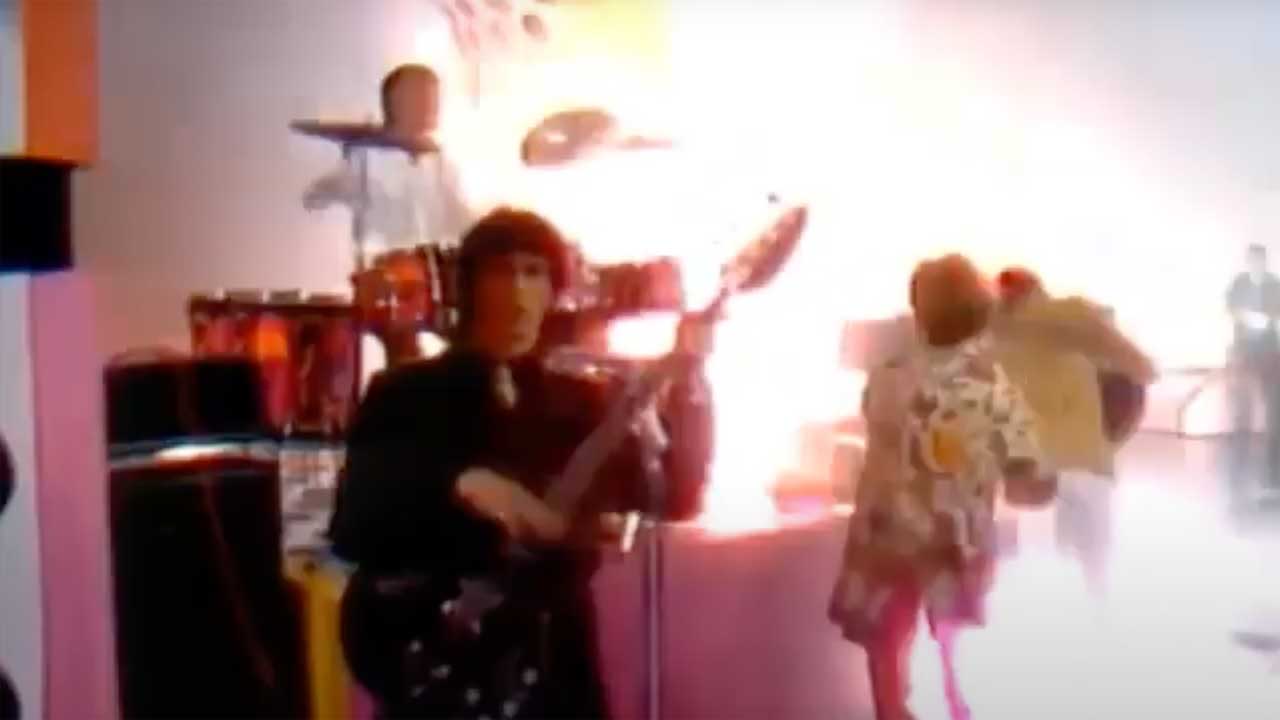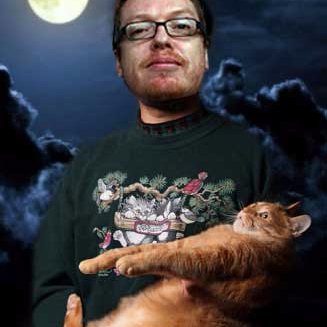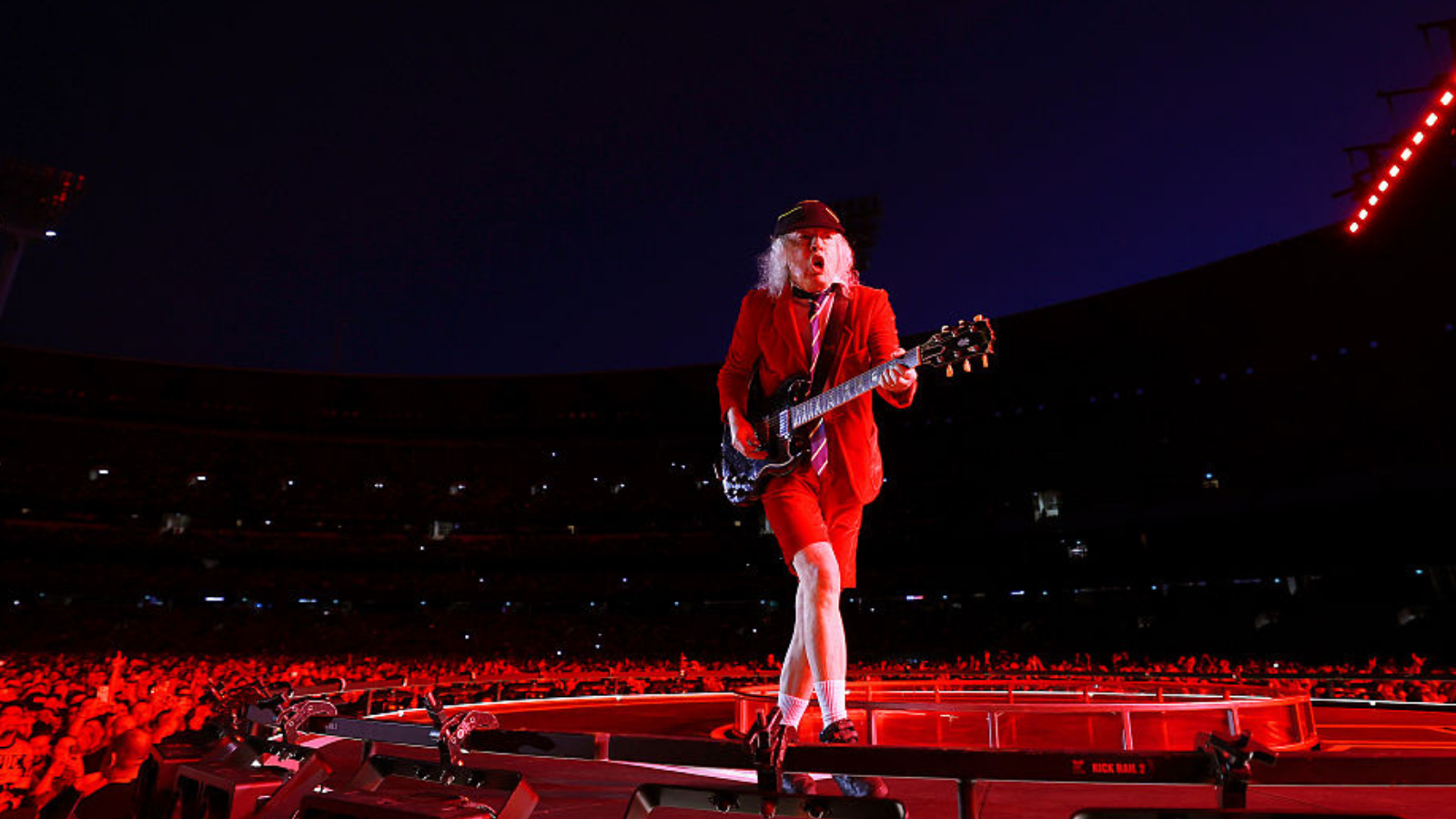"My hair caught fire and my hearing was never the same again": Relive the explosive moment Keith Moon blew up his drums on live TV
It's one of the most iconic clips in rock: The Who, The Smothers Brothers, and 10 times the permitted amount of gunpowder

If there's a single moment that sums up the chaos of Keith Moon and the combustibility of The Who at their best, it's the band's infamous performance on The Smothers Brothers Comedy Hour, on September 17, 1967, at CBS Television City in Los Angeles.
It's quite the evening for controversial TV appearances, and for beleaguered broadcaster CBS. A few hours earlier, across the country at CBS-TV Studio 50 in New York City, The Doors appear on The Ed Sullivan Show and perform Light My Fire. Jim Morrison has agreed to change line "Girl we couldn't get much higher" for the live broadcast, but accentuates it instead, and The Doors are banned from the show.
Back in Hollywood, musicians-turned-comedians-turned-political-lampoonists the Smothers Brothers are gearing up for the second show of their second series. Guests lined up for the show are Bette Davis, Mickey Rooney, and The Who.
The band have a reputation for destructive live shows, but this doesn't faze the producers. Tommy Smothers had been a compère at the Monterey festival earlier that summer, where he'd witnessed The Who's equipment-smashing at close quarters while in what he later called an "altered state of consciousness", and now he gives the band free rein to treat their instruments as they see fit.
Keith Moon takes this as a personal challenge. He has a small cannon filled with theatrical flash powder next to his kit, and under local union rules he’s not allowed to fill it himself, but he loads the cannon with an extra charge when the technicians aren’t looking.
Film director Jeff Stein, who uses the set's climax as the opening for The Who's much-loved documentary The Kids Are Alright, tells a slightly different story. "It was 10 times the legal amount of gunpowder you’re allowed to use on a sound-stage," says Stein. "Keith bribed a stage-hand, and I think he got him loaded on some booze."
Cameras rolling, Bette Davis plays Queen Elizabeth I of England in a sketch, Mickey Rooney duets with Tommy and Dick Smothers, and comedian Pat Paulsen delivers a meandering political talk. And then it's The Who.
Sign up below to get the latest from Classic Rock, plus exclusive special offers, direct to your inbox!
After miming new single I Can See For Miles, they play My Generation. As the song climaxes, Moon kicks his drums off the riser and Townshend attempts to atomise his guitar, thrusting the headstock into his amp before tossing it into the air.
And then there's the explosion. A huge flash. The studio shakes. The camera wobbles. The set fills with smoke. And through billowing clouds, Townshend stumbles into shot with a finger jammed in his ear and his hair standing erect, like Wile E. Coyote after being detonated by Road Runner. He's closest to the blast, and pays the ultimate price.
“My hair caught fire," Townshend said later. "And my hearing was never the same again."
Moon is also injured. The blast sends cymbal shrapnel slicing through his arm, while Roger Daltrey, who knows what's coming, has already retreated to a slightly less dangerous position on the stage. John Entwistle, meanwhile, seems completely unbothered, barely reacting as chaos erupts around him.
Tommy Smothers walks onto set with his acoustic guitar, ostensibly to restore some order, but the violence continues as Townshend snatches it from him and dashes it to the floor.
"Everyone was so shocked," remembered Tommy Smothers, years later. "When Townshend came over and grabbed my guitar, I was busy just seeing where the bodies were, seeing if anyone was injured. He picked the guitar up, and people kept saying, 'Did he really ruin your guitar? It looked so real!' And I'd say. 'Well it was real! I was confused as hell!'"
Rumours that Bette Davis reacted to the explosion by fainting into Mickey Rooney's arms backstage have been denied by The Brothers, but it was a moment that left its mark on anyone who saw it, giving inspiration to a generation of budding musicians attracted by the wilder side of rock'n'roll.

Online Editor at Louder/Classic Rock magazine since 2014. 39 years in music industry, online for 26. Also bylines for: Metal Hammer, Prog Magazine, The Word Magazine, The Guardian, The New Statesman, Saga, Music365. Former Head of Music at Xfm Radio, A&R at Fiction Records, early blogger, ex-roadie, published author. Once appeared in a Cure video dressed as a cowboy, and thinks any situation can be improved by the introduction of cats. Favourite Serbian trumpeter: Dejan Petrović.
